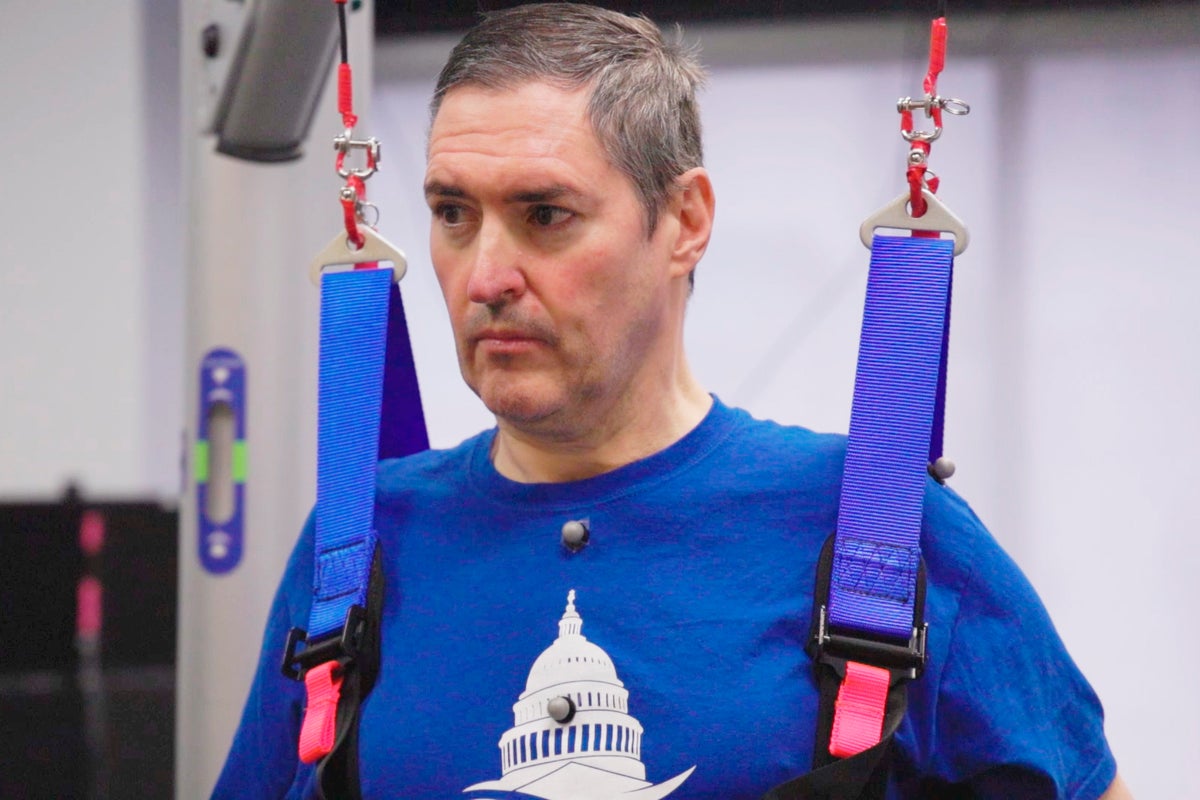
In a groundbreaking pilot study, researchers have found evidence that spinal cord stimulation could potentially benefit individuals with neurodegenerative diseases like spinal muscular atrophy (SMA).
The study, led by Dr Marco Capogrosso of the University of Pittsburgh, involved implanting a device that sends electrical impulses to the spinal cord.
The results showed a temporary but notable improvement in muscle function for three participants with SMA, a genetic disease that progressively weakens muscles.
SMA is caused by a genetic defect that attacks motor neurons in the spinal cord, leading to muscle wasting, particularly in the legs, hips, and shoulders.
While gene therapy offers a lifeline for infants with severe SMA and some medications can slow the disease's progression in older patients, there is currently no cure.
The participants in the study, who were already experiencing progressive muscle weakness, showed unexpected improvement during the month-long trial.
The implanted device stimulated their spinal cords, and as a result, they experienced increased strength and improved ability to stand and walk.
Dr Capogrosso noted the surprising nature of the findings, stating, "These people were definitely not expecting an improvement," yet "they were getting better and better."
While the study is preliminary and the observed improvements were temporary, it offers a glimmer of hope for those living with SMA.
The findings suggest that spinal cord stimulation, a technology already being explored for paralysis, might have broader applications in treating neurodegenerative conditions. Further research is needed to determine the long-term effects and potential of this approach.
Stimulating the spinal cord with low levels of electricity has long been used to treat chronic pain but Capogrosso’s team also has tested it to help people paralysed from strokes or spinal cord injury move their limbs unaided. While turned on, it zaps circuits of dormant nerves downstream of the injury to activate muscles.
Then Capogrosso wondered if that same technology might help SMA in a similar way — by revving up related sensory nerves so they wake up damaged muscle cells, helping them move to combat wasting.
The Pitt researchers implanted electrodes over the lower spinal cord of three adults with SMA and tested their muscle strength, fatigue, range of motion and changes in gait and walking distance when the device was firing and when it was turned off.
It didn’t restore normal movement but with just a few hours of spinal stimulation a week, all quickly saw improvements in muscle strength and function, researchers reported in the journal Nature Medicine.
“With a progressive disease you never get any better,” said study participant Doug McCullough, 57, of Franklin Park, New Jersey. “Either you’re staying stable or getting worse. So having any improvement is just a really surreal and very exciting benefit.”
All three participants significantly increased how far they could walk in six minutes, and one who initially couldn’t stand from a kneeling position could by the study’s end, Capogrosso said. And McCullough’s gait changed so that each step was about three times longer.
“They get less fatigued so they can walk for longer,” Capogrosso said. “Even a person this many years into the disease can improve.”
Intriguingly, researchers found the improvements didn’t disappear as soon as the stimulator was switched off, though they did fade as participants were tracked after the study ended.
McCullough said even when the stimulator was turned off, some nights his legs “would just feel supercharged.”
While he understood that the device had to be removed at the study’s end, he was disappointed. He said there were some lingering benefits at his six-week checkup, but none after six months.
Neuroscientist Susan Harkema, who led pioneering studies of stimulation for spinal cord injuries while at the University of Louisville, cautioned the new study is small and short but called it an important proof of concept. She said it’s logical to test the technique against a list of muscle-degenerating diseases.
“Human spinal circuitry is very sophisticated – it’s not just a bunch of reflexes controlled by the brain,” said Harkema, now with the Kessler Foundation, a rehabilitation research nonprofit. “This is a very solid study, an important contribution to move forward.”







